A Halloween Trick That Turned into a Pumpkin Treat

In Russia most people think there are three feast days of Christ the Savior in the late summer and early autumn. Each holiday has a religious name, but they are long — for example, “The Procession of the Venerable Wood of the Life-Creating Cross of the Lord.” So people gave them names associated with what was harvested at the time. For centuries lay people celebrated the Apple, Honey and Nut Feasts of Christ the Savior.
But once there was also a Pumpkin Feast of the Savior. When pumpkins were brought to Russia by Byzantine monks, Prince Vladimir was so impressed by their size and weight that he ordered them to be planted along the borders of Russia.
The idea seems to be that the formidable pumpkins would puncture the pride of the steppe nomads and fill them with terror of the great and powerful Russian leader, thus protecting the nation from invasion and desecration. To this day when people are excavating in those areas they find giant pumpkin seeds — the legacy of the past glory of their ancestors.
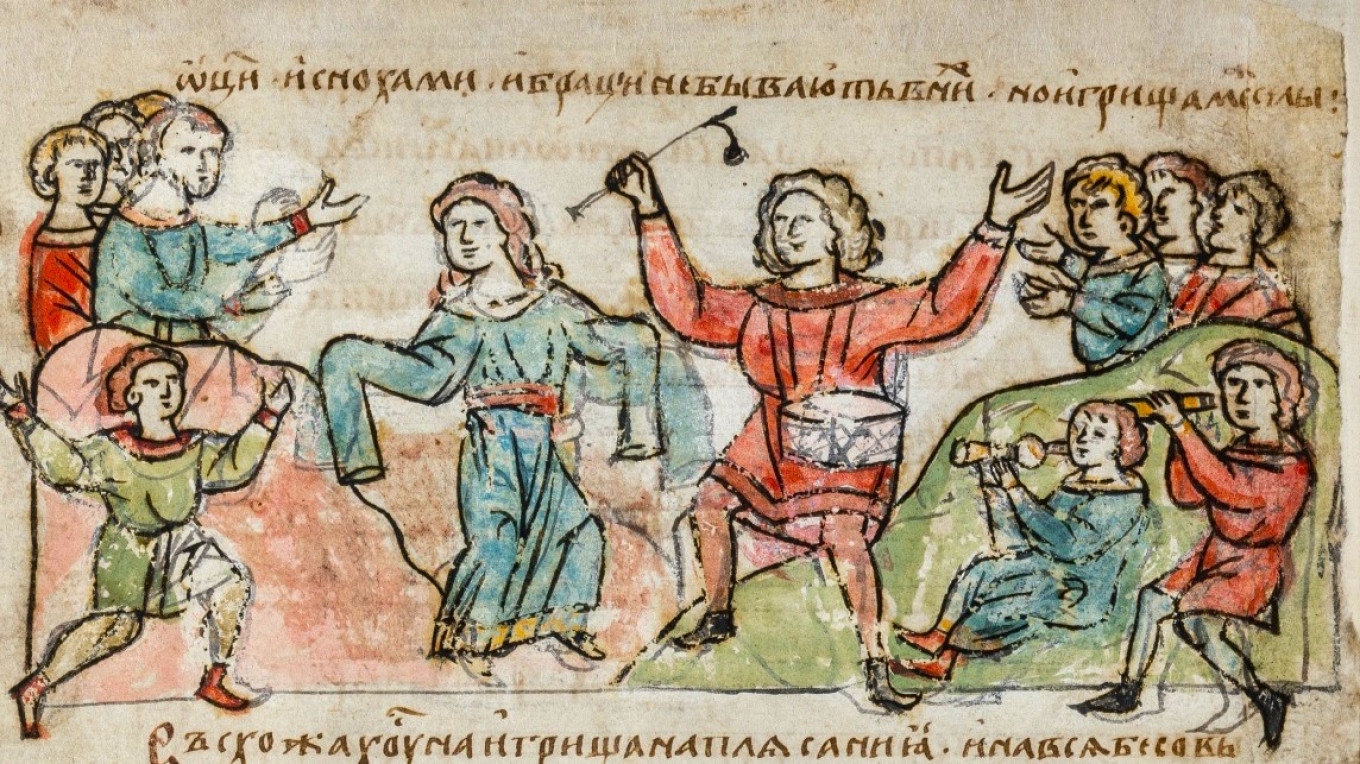
Wikimedia Commons
Alas, in Petrine times some malicious German scientists who were invited to the Russian court tried to erase the memory of the pumpkin-savior. In 1725 the botanist Johann Christian Buxbaum accompanied the Russian diplomatic mission to Turkey and collected “a great herbarium” of Russian plants along the way. A simple Russian man named Evlampy Popov brought him carefully preserved seeds from a huge pumpkin that his family had kept for 300 years. According to legend, the holy elder Velimudr from the Serafimo-Dokuchayev skete bequeathed the seeds to his decendents with the instruction to grow and preserve them. But the German threw them away, not believing that such a great plant could be Russian.
Nothing remained of those fairy-tale times but distant memories of pumpkin glory. In 1852 the Proceedings of the Imperial Free Economic Society was news of a giant pumpkin. The pumpkin was grown in the town of Kashira in the vegetable garden of the honorable Popovs — descendants of the above Evlampy, of course. “It weighed 5 poods 32 pounds (95 kilograms). Its circumference was equal to 3 arshins and 11.5 vershki (2.6 meters). It had the shape of a raspberry with a very pointed top.”
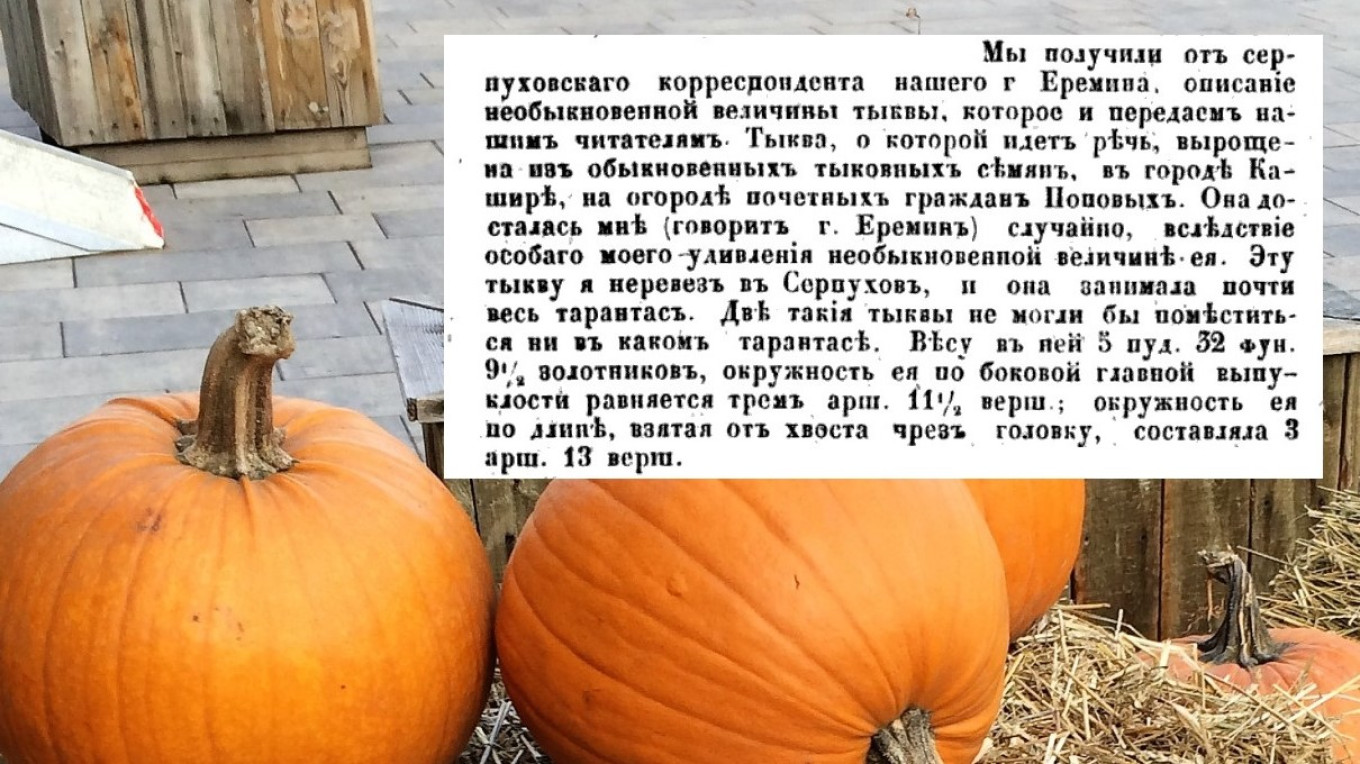
Courtesy of authors
When the pumpkin was opened, 410 large seeds were taken out. These seeds turned out to be perfectly good and weighed a total of 70 zolotniki (almost 300 grams).
Alas, although the pumpkin had a fine flavor, the people had forgotten their ancestors’ recipes. They poured God-awful Italian sabayon over the pumpkin. Since then no giant pumpkin has been raised in Russia. And the Pumpkin Feast Day of the Savior that was once celebrated at the end of October has been forgotten. It has been defiled by foreign abominations.
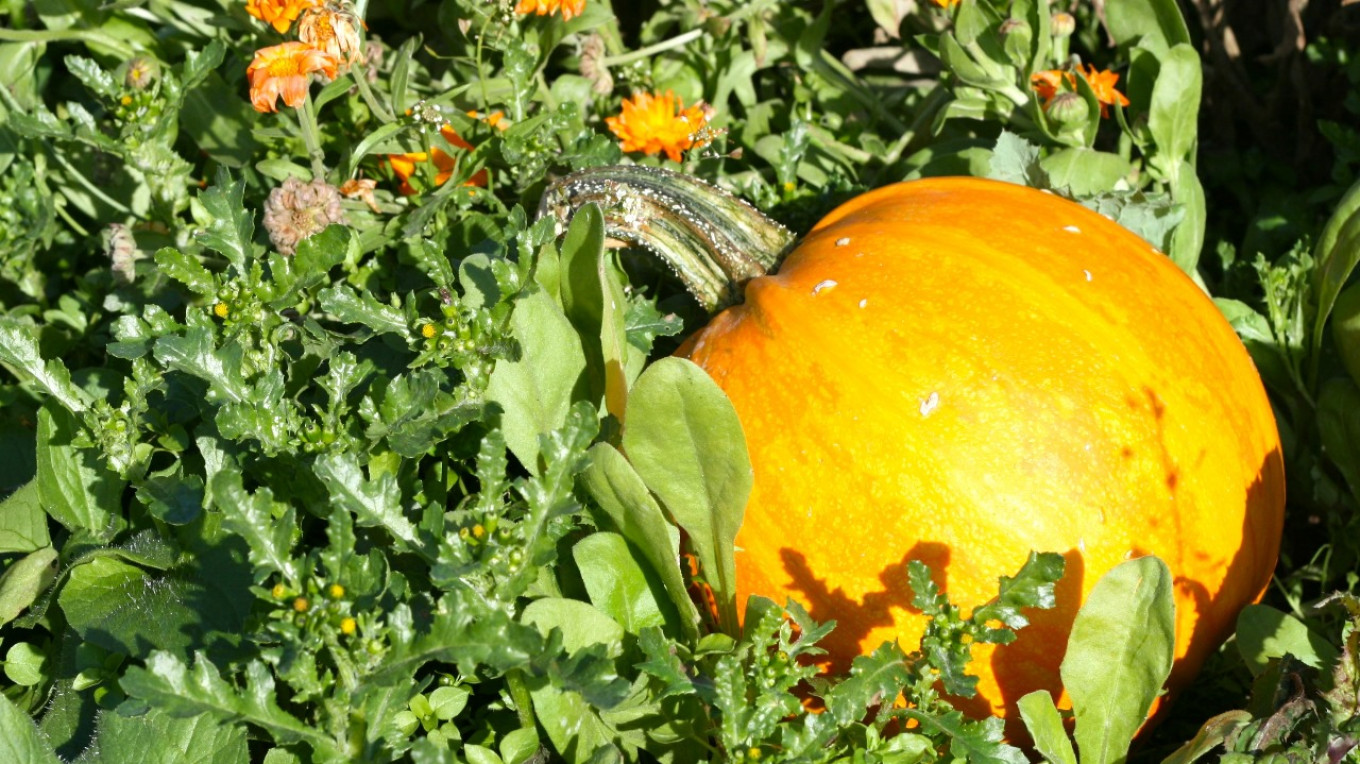
Is this a joke? Well… yes! Of course it is. To make fun of the new trend of rewriting history to support current policies, this story was invented, combining historical names and facts with complete fiction, and published in a blog in 2020.
For many years the Russian authorities together with the Russian Orthodox Church have been crusading against what they consider the “satanic” holiday of Halloween. But to the bloggers’ surprise their comical parody was taken seriously by patriots, who started a whole grass-roots movement.
Teachers from Izhevsk, apparently not understanding the humor, suggested celebrating the Pumpkin Feast Day of Christ the Savior instead of Halloween. Patriotic bloggers picked up the idea in social networks. And Orthodox priests, surprised at first, had to say that it would not be so strange to have a new feast day of the Savior.
This year the state’s battle against Halloween has picked up momentum. Deputies of the State Duma again suggested replacing the holiday they hate with a homegrown holiday. Deputy Speaker Chernyshev even drew a parallel: “The ‘import substitution’ of McDonald’s was a success, so we should do the same with Halloween,” he said.
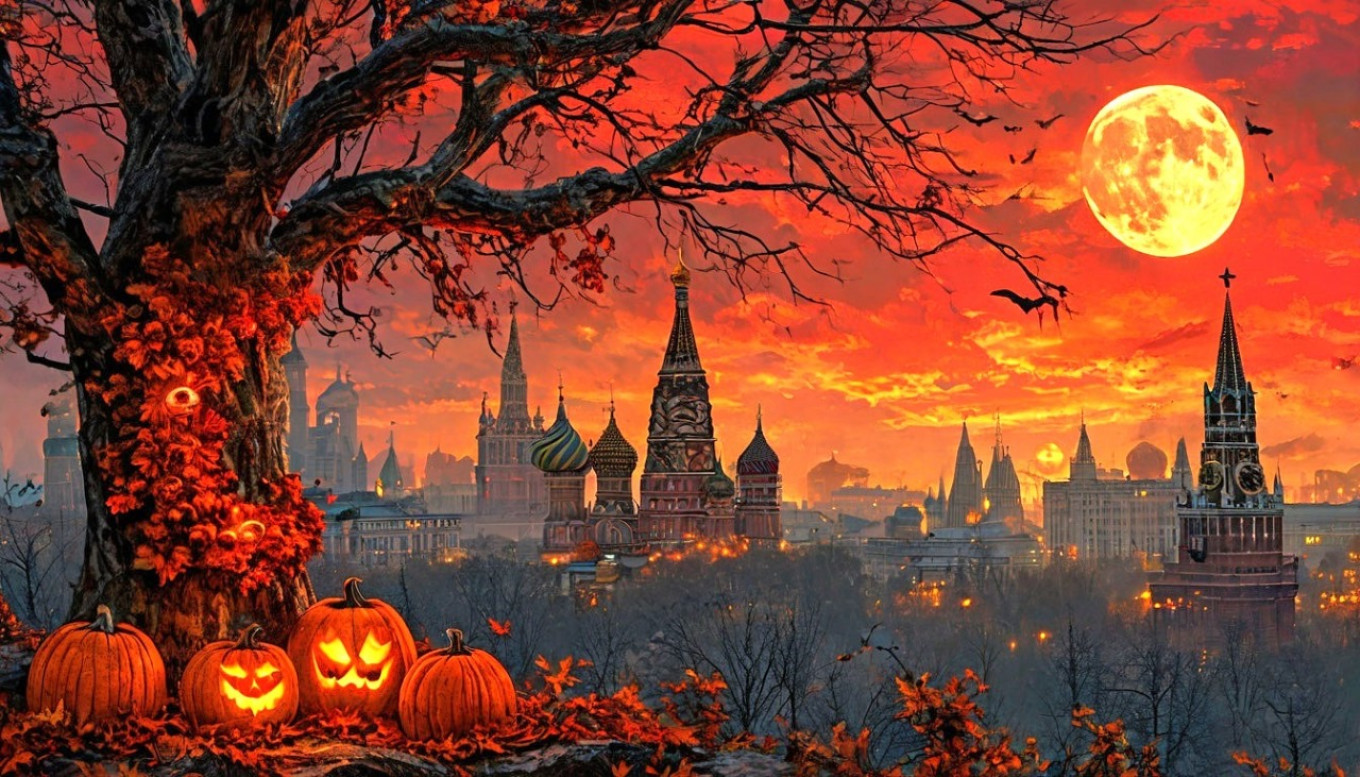
Courtesy of authors
But if we put aside the endless complaints of offended Putin patriots, what does Halloween mean to us? It has one important consequence for cooks: They will find themselves with a lot of pumpkin, and they’ll have to figure out what to do with it when the holiday is over.
And that’s where we come in.
On the eve of Halloween, we went to the market and couldn’t stop taking photos of these orange beauties. It’s the perfect time to cook pumpkins. You can make a scary face or you can make some delicious and colorful dishes. We ate these thin pumpkin pancakes in the garden not long ago — and even the wasps (in the first photo) appreciated these delicious homemade pancakes.
Pumpkin Pancakes
Ingredients
- 400 g (14 oz) peeled pumpkin
- 250 ml (1 c) milk
- 120 g (4.25 oz or 1 c) wheat flour
- 3 eggs
- 50 g (1.7 oz or 1/4 c) sugar (or to taste)
- pinch of salt
- 5 g (1 tsp) cinnamon
- natural vanilla sugar
- 1 tsp baking powder
- 20 ml (1 Tbsp) vegetable oil for the dough + for frying
Instructions
- Peel and cut the pumpkin into small cubes.
- Put the pumpkin in a saucepan and pour in 50 ml (1/4 c) of water, 1 Tbsp sugar and ground cinnamon.
- Put on the stove and cook the pumpkin at a low boil until soft, about 15 minutes.
- Mash the pumpkin along with the remaining liquid into a puree using a potato masher or immersion blender. The more homogeneous the pumpkin puree, the better!
- Pour cold milk into the mashed pumpkin and stir.
- In a separate bowl, beat the eggs, 2 tablespoons of sugar, vanilla and salt. Whisk to combine. Add to pumpkin-milk mixture, stir with a whisk.
- Add sifted flour and baking powder to the pumpkin base and then knead into a smooth dough.
- Pour the vegetable oil into the pumpkin dough, mix and leave for 10 minutes.
- Heat a frying pan and grease it with vegetable oil.
- Divide the dough and roll out thin pancakes.
- Fry the pancakes about 30-40 seconds on each side.
Serve pumpkin pancakes with butter, sour cream, honey, condensed milk — in general, with whatever your heart desires.
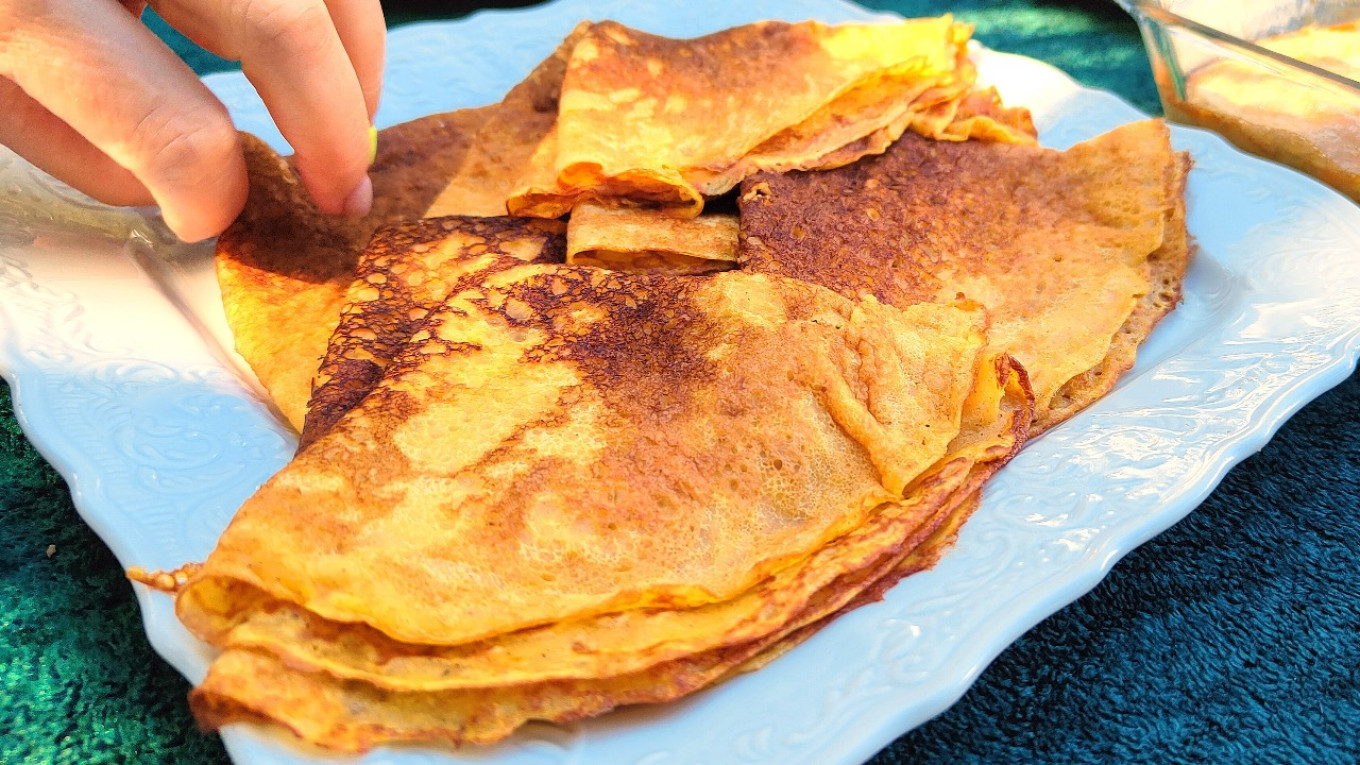
A Message from The Moscow Times:
Dear readers,
We are facing unprecedented challenges. Russia’s Prosecutor General’s Office has designated The Moscow Times as an “undesirable” organization, criminalizing our work and putting our staff at risk of prosecution. This follows our earlier unjust labeling as a “foreign agent.”
These actions are direct attempts to silence independent journalism in Russia. The authorities claim our work “discredits the decisions of the Russian leadership.” We see things differently: we strive to provide accurate, unbiased reporting on Russia.
We, the journalists of The Moscow Times, refuse to be silenced. But to continue our work, we need your help.
Your support, no matter how small, makes a world of difference. If you can, please support us monthly starting from just $2. It’s quick to set up, and every contribution makes a significant impact.
By supporting The Moscow Times, you’re defending open, independent journalism in the face of repression. Thank you for standing with us.
Continue
Not ready to support today?
Remind me later.
×
Remind me next month
Thank you! Your reminder is set.

